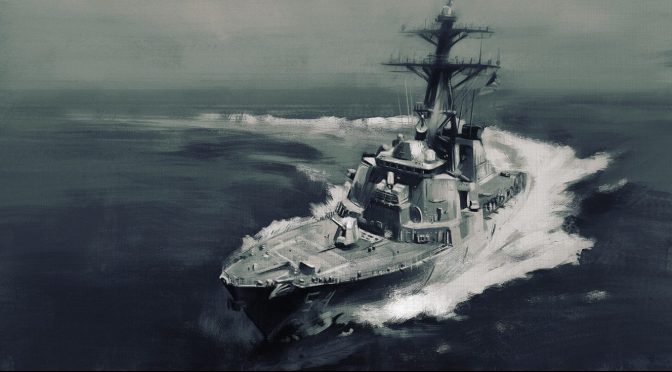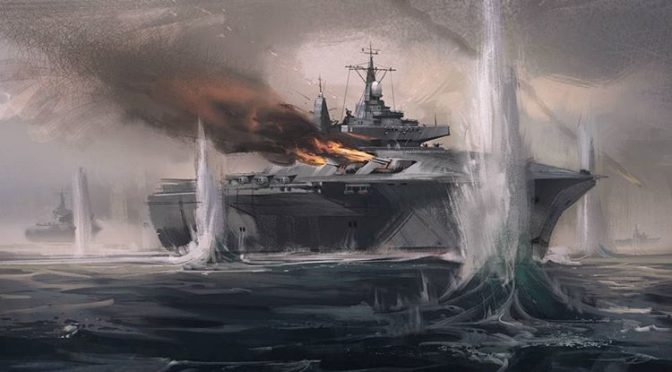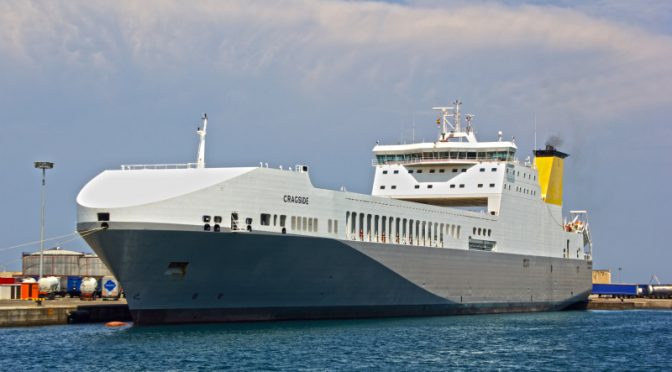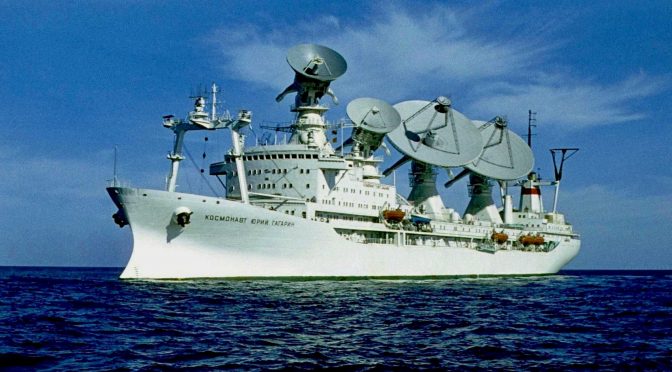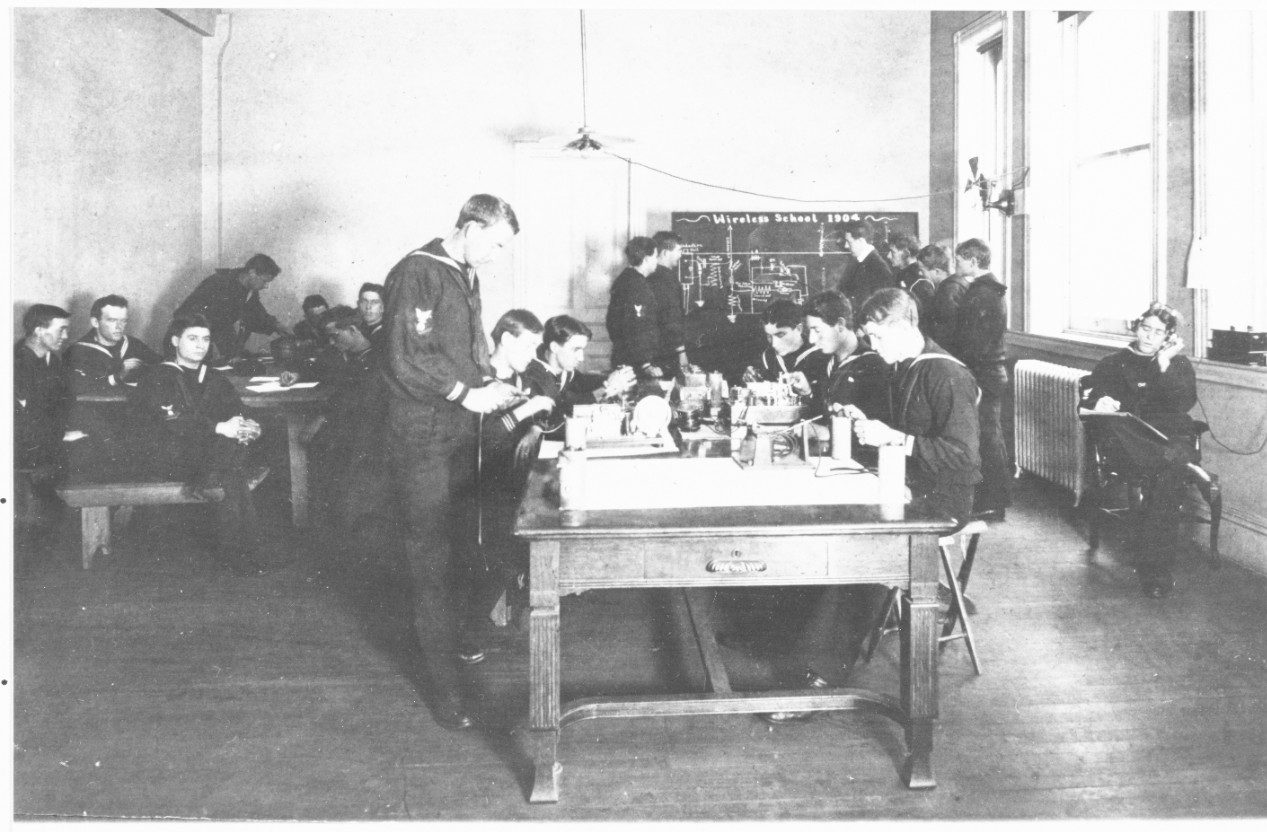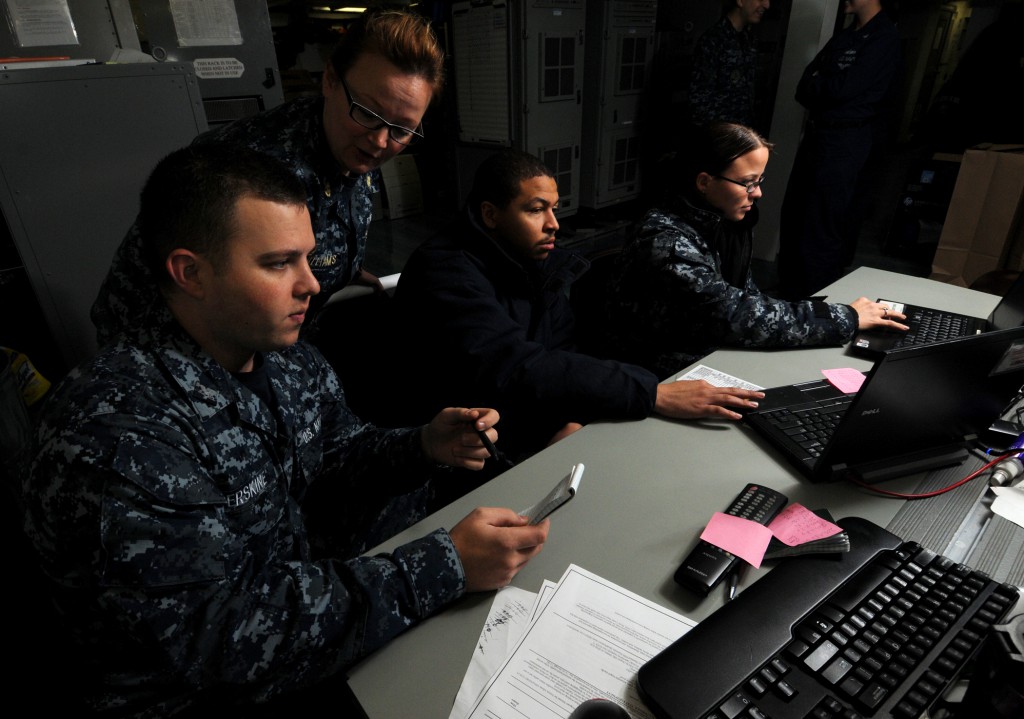By Jeffrey B. Hunter
Bells rang through the passageways and selected berthing spaces of the Navy’s newest, first-in-class destroyer, the USS JOHN POINDEXTER, as the smooth and melodic voice of one Seaman Halsey roused the morning watch from their beds with his traditional greeting.
“Rise and shine, shipmates! It’s another fine Navy day, so let’s show’em what we’re made of.”
A series of groans reverberated through the darkened hollows of berthing two as Halsey incrementally increased the lighting to each bunk. Jonas blinked in the slowly retreating darkness with a reluctant sigh. He couldn’t remember the last time he’d had the luxury of not choosing between taking off his coveralls and sleeping over four hours.
“Screw you, Halsey,” shouted one of the other disgruntled residents, stumbling out of his rack and stretching his tall, emaciated frame as much as the cramped space would allow.
“Neg, leave it alone,” Jonas replied, rubbing his eyes and rolling out of his rack. Normally as berthing supervisor, Jonas would try to be more patient with his bunkmates, but he just wasn’t in the mood.
“You know he can hear you, and what happens if you piss him off. Just get your stuff and…oh, Jesus…put some fricking boxers on, you tool. No one wants to see that.”
“First,” Ng said, scratching his temple with a long, skeletal middle finger, “it’s Ng, jack ass, as in ‘swing’, ‘fling’, ‘spring.’”
“That’s Petty Officer Jackass to you,” Jonas shot back, quickly accompanied by a series of cat calls reminding him that he’d never actually left elementary school.
“Second,” Ng continued undaunted, propping a hairless chicken leg as high on the ladder next to his bunk as possible, “everyone wants to see this. How could they not?”
“Because they have eyes, you CHICOM,” piped up Pulaski from a couple bunks down. Jonas groaned; this was going to be long morning if they were already getting into the ethnic jokes.
“CHICOM?! I’m not Chinese, you ignorant fascist. What are you, eighty?” Ng shot back, now assuming his best superhero pose. “Besides, you can’t even see me.”
“Ng, you’re six-two and weigh a buck five,” Pulaski replied, popping his shaved head out from his bunk with a wry smile, “you look like Lurch on a juice-fast.”
“Lurch? Really? God you’re old,” Taylor cackled as he passed only to be rewarded by a thump on the shoulder from the amateur boxer.
“It’s okay, Taylor,” a voice Jonas thought was Moore said from the back of the berthing, “I don’t think that have Netflix in Poland. Not ever since ‘ze Germans…”
A chorus of the “’ze Germans” began to make the rounds through the space, Pulaski egging on the cheers like a football player pumping up the crowd after retrieving his glasses from under his bunk.
There was a time when Jonas might have been horrified by the relative insensitivity of poking fun at the great grandchild of holocaust survivors, but…the Navy had really beaten that out of him by this point.
Nothing was sacred in the berthing unless someone raised a stink and Pulaski was one of the more even keeled members of berthing two. In his own way, he seemed to own his family tragedy with a strange sense of pride and could probably turn anyone who crossed the line into a fine paste. Jonas would just step in and fix things before that happened.
While a fight or two might break out on other ships, no one was stupid enough to try it on the POINDEXTER. On other ships, issues could be solved by berthing supervisors, the Chief’s mess, and maybe even the Junior Officers before things got out of hand and people’s careers got snuffed. Here, Seaman Halsey would screw all of them before anyone could intervene and everyone knew it.
“If by Lurch, you mean an Adonis…” Ng continued, doing his best Usain Bolt victory pose.
“I don’t.”
“…and by a juice-fast, you mean bathed in mana and sunlight…”
“No, not really,” Pulaski replied matter-of-factly.
“…then you would be close,” Ng continued, undeterred. “But you see, my bespectacled friend…”
“Guys, seriously,” Jonas interrupted sharply, pulling the laces on his work boots to the point where his fingers turned white, “we don’t have time for this. They moved quarters up to ’15 for the broadcast from Third Fleet. So shave, shower, and shove off. ”
“Fifteen,” Ng spat, pulling a towel out from his bunk with the closest thing to urgency he could muster, “are you kidding me? When’d they put that out?”
“During mids last night,” Jonas replied, grabbing a razor and ducking into the head, “check your POST.”
The razor grated against Jonas’s skin, each bristle burning as though it were being individually excised and leaving the occasional red streak on his otherwise sun-starved skin. He hated dry shaving, but they just didn’t have the time.
Halsey hadn’t adjusted for the change in shift times, Jonas just knew it. Chief didn’t like submitting anything to Halsey which meant that everyone essentially had two schedules: Chief’s and Halsey’s. Both schedules had to be adhered to and rarely would match each other. Jonas had somehow managed to keep his section on track until now. He’d been too stupid to set an early alarm for everyone and now it was finally going to bite them.
At least Jonas had checked his POST before racking out. The Navy’s Personal Operating System Terminal, or POST, was one of the newest innovations big Navy had come up with for the POINDEXTER. It was essentially a smartphone, although the gents from the blue tile area got testy whenever you called it that. They’d tell you it was a vital link in the communication chain between the work centers, leadership, and Halsey. In reality, the POST was just one more way for the Navy to keep its thumb on you every hour of every day.
“Man, this bull shi…”Ng started, but Jonas didn’t let him finish.
“Yeah, yeah, yeah, whatever man. You can let Chief know after quarters. I’m sure he’ll get right on it.”
The stench of oil-soaked dust and sweat filled the Combat Information Center as all of the POINDEXTER’s forty sailors crammed into the container sized space. Normally, they’d hold quarters on the helo-deck, but the admiral apparently wanted to address the whole crew before she arrived and the CIC was the only room equipped for the job.
That meant that instead of the crew getting their only bit of sunshine for the day, everyone was now tripping over each other trying to stay in some semblance of a formation amidst the CIC’s chairs and workstations.
Meanwhile, Chief Graven was trying not to step on the contractors setting up the teleconference while simultaneously delivering one of his usual morning speeches. The guys called it Ravin’ with Graven and was about as close to a comedy skit as any of them were going to get underway.
“Jesus Christ,” he’d always start; his thick Bangor accent filling the space while sweat dripped down his scalp, “fifteen minutes ‘arly. Naught five, naught ten, naught friggin’ faurteen. Fifteen. Any a you chuckle-heads thinks the friggin’ admral is gaunna wait fa ya?”
No one answered as the question was entirely rhetorical. Still, Jonas was not remotely surprised to hear Pulaski whisper behind him, “No, but I guess she’ll wait on you.”
Jonas just kept his eyes straight ahead. He was one of three second class petty officers on the POINDEXTER eligible for taking the first class exam and was still trying to recertify on his Information Warfare pin. It was bad enough that he was a weather specialist in an information technology billet, but now there were only three Chiefs on board to administer his board. He didn’t have room to piss off Graven, especially since Seaman Halsey was watching. Oddly enough, monitoring the crew was the only area that Chief and Halsey seemed to get along.
“…my Grandmatha…” Graven continued, the smacking a monstrous russet knife hand on the workstation in front of him brining Jonas back into the discussion just in time to meet Chief’s eyes while he took a sip of coffee from his Big Gulp mug.
This was a ritual of theirs. Graven would watch for any sign of anyone drifting off or spacing out and the crew would try to time their momentary lapses before he could catch them. They knew Chief would occasionally get a text on his POST from Halsey if he’d missed someone, but they’d also gotten pretty good at finding out how to keep Halsey guessing too. Ng had even tried to take up ventriloquism, but had so far only managed to get a few compromising photographs published on the daily work roster.
“Wait, how did we get onto his Grandmother,” Ng whispered to Jonas’s right.
“I don’t know, I must’ve had a stroke or something,” Pulaski answered, stifled laughter sweeping the workstations behind Jonas.
Chief’s POST vibrated on his belt as Halsey clearly noticed and ratted on him. Graven barely even paused to check the name on the screen before taking another sip of coffee and getting right to business.
“Haulsey tells me ya gaut somethin’ ta say, Pilski,” Chief began, his sharp smile made slightly menacing by the dark bags beneath his bloodshot eyes.
“Nothing Chief,” Pulaski answered, though there was too much laughter in his voice to miss.
“Oohohooo,” Graven cackled, a new bounce in his step, “Does lil’ Timmy Pilski wanna crack jokes in quaatas?”
“Is that even a word, Chief?”
“I’ll get to you in a moment, Neg,” Graven replied, his beady eyes shooting from one sailor to the other.
“Chief, I’m pretty sure that’s racist.”
Half the “formation” broke into raucous laughter while the rest froze like chameleons in a tree, praying Chief would just ignore them.
Graven took a moment to take another sip of coffee, clearly deliberating Ng’s fate while shaking his head and glaring pityingly at his junior sailor.
“Jesus Christ, Neg,” Chief continued with a reluctant laugh, “you aah dumb as dirt. Jonah, when do I get to replace this dink?”
“About two more months, Chief,” Jonas said with a smile, though he begged the two of them to shut up. It was bad enough sticking around for the admiral, but he knew Chief would talk to him about bearing after this and he just didn’t have the time.
“Gawd help us,” Graven exclaimed with a bemused smile, “Ahright, listen up. Neg, you’re retaaded. Seaman Timmy, when I want yor apinion…”
“Hey, Gary,” one of the techs working the teleconference interrupted, “I think that’s it. The connection should dial up pretty quick.”
“Gary Graven,” Ng whispered, “are you fricking kidding me?”
“Stow it, Neg,” Graven grunted, a digital ring tone coming over the loud speaker.
“Wait, where’s the Captain and LT,” Taylor asked Jonas, though Jonas didn’t answer. He hadn’t seen either of the ships’ officers since his in-call a month ago. As far as he knew, Chief and Halsey had killed them and chucked them overboard.
“Standby, incoming call from U.S. Third Fleet Headquarters; Commander, Third Fleet on the line,” Seaman Halsey announced over the speakers. Simultaneously, everyone’s POSTs began vibrating, the same words emanating from their hips and creating an eerie harmony.
“Standby,” Halsey said again, though this time over the bridge’s loud speaker. “Attention on deck!”
A chorus of boots smacking together accompanied the opening of the bridge’s port hatch and the appearance of Lieutenant Commander Hall, swiftly followed by Lieutenant Shivaza, who promptly took their places at the head of the “formation.” Not a moment later, the feed connected and the enormous figure of Admiral Tyco appeared, greeting them in her usual subdued and robotic way before jumping right to business.
A sickening chill ran down Jonas’s spine as he crossed from the soothing tapioca of the ship’s second deck general spaces to the speckled azure of the restricted section.
The admiral’s speech had been thorough and fact-filled, which is why everyone had nearly fallen asleep. The only real nugget that had everyone stand to was the announcement that they’d be conducting a live fire test of the railgun. More than that, Seaman Halsey would be the one manning the guns.
As expected, the crew of the POINDEXTER maintained their bearing with this unexpected news; that is right up until the teleconference ended and the Captain and Chiefs began barking orders like stockbrokers on Black Friday. Jonas had barely escaped the chaos since he was still technically a meteorologist and had yet to complete his Information Warfare re-certifications.
Up until recently, this fact had caused him innumerable sleepless nights of studying and binge-watching online trainers. Now it meant that he could flee to the confines of the Axis until this particular horror show was over. The only downside was that the Axis was in the blue tile area.
On every other ship in the Navy, blue tile was flag officer country and one of two places where happiness went to die. Jonas wasn’t cleared to work in engineering, so that fortunately limited his levels of the Inferno to just the one. Still, Jonas hated this part of the ship, even if it wasn’t officer country.
The only reason Jonas even dared to cross the blue tiles’ threshold was to talk to Kyle, one of the mid-level contractors working with Halsey to keep the ship up and running. As a former chief electrician and expert on the POINDEXTER’s computer and electrical systems, he’d been approved as acting certifying official for his rates’ new electronics qualifications. Normally, the Navy would raise a stink on having a civilian do the job, but they didn’t have any sailors onboard who were qualified, so it was a moot point.
“General Quarters, General Quarters,” Seaman Halsey’s unwavering tenor rang through the passageway swiftly followed by the high-pitched whine of the combat siren, “all hands man your battle stations.”
Jonas sighed and shook his head.
“Here we go,” he said to himself swiping his security badge through the scanner outside the Auxiliary Quantum-Computing Server room, or “Axis room” as they called it, keying in his security pin, and putting his thumb in the fingerprint scanner.
A moment passed before the keypad flashed green and he heard the slick click of magnetic locks being released.
“Are you ready, man?” Kyle greeted him from behind the catacombs of computer servers as Jonas stepped into the frigid recesses of Axis and re-sealed the hatch.
“Kyle, the only people who get excited about a weapons firing are newbies and SWOs and I…”
Jonas stopped speaking as he began to recognize the music Kyle was playing.
“Daisy, daisy, give me your answer please…” sang a vinyl-rich tune. Suddenly Jonas’s hair began to stand on end as he navigated his way to Kyle’s lonely computer terminal in the back corner of the space.
“Are you seriously playing that right now,” Jonas asked testily, taking a moment to stop and appreciate a collage of kitchen magnets resembling a giant red eye on one of the servers opposite Kyle’s desk.
“Why not,” Kyle asked, brushing some granola bar off his nearly luminescent aloha shirt. “Seems only fitting.”
“It’s creepy.”
“Only if you believe in fate…”
Another chill ran down Jonas’s spine while Kyle began to chuckle.
“You know you suck, right,” Jonas said, taking a seat in one of the spare fold-out chairs.
“Yeah, I know,” Kyle answered with a knowing smile, “but you have to admit, it’s pretty cool.”
“Sure,” Jonas replied, absentmindedly reading the ship system data on the TV monitors above Kyle’s desk, “One small leap and all that…”
“Man, you have no sense of occasion,” Kyle chided, clapping his hands together and typing furiously on the keyboard, “here we go…”
In moments one of the TV monitors flashed to live footage from the ship’s air defense gun while the second streamed video from an observation drone cueing between the POINDEXTER and a small target drone flying circles in the distance. A few more clicks of the keyboard, and chat windows from the different centers appeared beneath the videos, each either discussing the different aspects of the test or ranting about fantasy football.
Jonas shivered and began rubbing his hands, trying to ignore the faint clouds of steam leaving his nostrils.
“So why can’t we get a space heater in here,” he asked Kyle, who had taken to reviewing the Axis’s processing performance.
“Can’t let the place get too hot,” Kyle answered, completely un-phased by the frigid conditions. “The computer’s entangled pairings need to stay near 4 Kelvin to keep the system working. That and we need to shield them from electromagnetic radiation or the whole system starts to shut down.”
Jonas cast a skeptical glance at the large magnetic mural opposite them.
“Oh, don’t worry about that,” Kyle said with a smile, “the towers are shielded against minor fields like that and we’ve got superconductors shielding the Axis from signatures outside. The Axis is basically impenetrable, in that respect anyway.”
“Huh,” Jonas said, starting to feel a little impressed.
“Standby for test,” the LT’s voice flashed over the speakers. “Seaman Halsey has assumed fire control.”
Kyle’s eyes lit up immediately as the processing draw on his screens began to spike.
“Target identified and acquired,” Halsey said confidently. The gun’s camera slewed to port and centered on its target, zooming in so that Jonas could even see the propellers rotating from miles away.
“Target is an MQ-8 FIRE SCOUT. Firing solution plotted, capacitors charging.”
“Capacitors charging for a minimum range shot,” said a voice Jonas guessed was one of the contracted engineers working the railgun.
“Confirmed Captain,” the LT chimed in, “firing solution looks good. No other aerial or surface contacts in the line of fire.”
“Understood,” the Captain answered, “alright, Halsey, here we go; on my mark…four, three, two, one, fire.”
The ship jolted as the round left the rails, nearly knocking Jonas out of his chair. In an instant, the round tore through the helicopter-shaped drone, shattering the frame beneath the immense force of impact.
“Yeah!” Kyle shouted, raising his fists in triumph before pausing. Moments passed and Jonas was tempted to ask what was wrong, but thought better of it. There was far too much focus and too little patience on Kyle’s pale, computer-lit face for it to be anything but a big problem.
“Wait, wait,” he muttered, peering into the monitors, “where’s the charge? There should’ve been an explosion.”
Kyle snatched up his radio.
“Hey, Kelly, did you see an explosion?”
“No, no explosion,” the woman said, clearly a little confused, “target’s still pretty dead, though.”
“That’s not what I mean,” Kyle answered, now sounding worried, “I mean from the round. I don’t think the round detonated.”
Seconds passed before the observation drone’s feed began slewing dramatically beyond the wreckage, scanning for anything out of the ordinary.
“There,” Jonas said, spotting a small white plume on the gun’s feed. Kyle scanned the feed and nodded, giving Jonas a thankful thumbs up.
“Hey, Kelly,” Kyle said into the radio, “pan a few more miles down range. We just saw some spray.”
In moments, the drone’s feed caught sight of the spray and what lay at its source.
A massive, dark cloud filled the black and white images of the drone’s feed and Jonas could see the chunks of flotsam scattered around a pool of foam at its center. He couldn’t see anything that looked like pieces of a ship, but that didn’t keep his heart from jumping into his throat. He doubted anything would look like its former self after that.
“What the hell did we hit?” the Captain’s dead-pan voice came over the radio. “I thought we were clear down range, Lieutenant.”
“We were, sir,” the LT replied, “we didn’t see anything.”
“Then what am I looking at? Halsey?”
Another plume erupted in the corner of the observation drone’s feed.
“We appear to have struck a pod of marine mammals, Captain. Dolphins to be specific,” Halsey replied, a small, light figure appearing at the cloud’s epicenter before dissolving back into the carnal stew.
A palpable silence hung over the radio.
“Dolphins?” The captain repeated incredulously.
“Dolphins!” Kyle exclaimed, his face growing scarlet with laughter and relief, “Frigging dolphins! Are you kidding?! Oh my god…”
Jonas stayed silent. Killing marine mammals was a big deal, especially in U.S. waters with the admiral coming on board and Seaman Halsey’s penchant for following regulations to the letter. Somebody was going to get hammered over this. Still, he hadn’t been anywhere near the CIC so at least it wasn’t his problem.
The mid-shift bell rang hollowly through the Axis while Jonas absentmindedly tapped his fingers on the desk and tried to figure out a way to get some games on his POST. Things had been pretty dull since Halsey had learned how to make bottle-nose bisque.
Kyle had been called away to deal with problems in the main server node while Chief Graven had ordered Jonas to stay put in the Axis and monitor things under pain of peeling potatoes with Ng down in the galley. Apparently with all of the contractors occupied solving technical glitches, Jonas was the most qualified person left to sit the Axis watch.
Jonas could have been frightened at the idea; mustered some measure of apprehension at the notion of an underpaid meteorologist being placed in charge of a multi-million dollar piece of experimental equipment. There was even the potential for him to be astounded that leadership had ignored his words of warning as to just how bad of an idea this was. Instead, Jonas was hungry.
Dealing with the absurd was just another day in the Navy, but doing it on an empty stomach was just cruel.
Suddenly, a voice from the intercom rose over the din of humming servers.
“Jonas, oh Jonas…”
Jonas rolled his eyes, spying a freakishly tall tuft of black hair blocking the Axis’s external security camera.
“What do you want, Ng?” Jonas asked testily.
“I have a surprise for you,” Ng replied in a voice Jonas could only liken to a cartoon pedophile.
“Dude, I’m not in the mood.”
“Just open the door, man” Ng said, his voice returning to its usual register.
“Are you even cleared to be in here?”
“Dude, they wouldn’t put me on the ship if I wasn’t. Now open the fricking door.”
Jonas sighed and scratched his head. This was a new ship, so they’d probably vet everybody coming on board.
“I have your din-din,” Ng continued, clearly sensing Jonas’s hesitation.
“Fine,” Jonas capitulated, swallowing his doubts for the chance to silence his growling stomach.
The magnetic locks clicked open and Ng soon emerged from behind the wall of servers, a black backpack in hand and wearing an unnervingly wide smile.
“Heidi ho, neighbor,” he said, slapping the backpack on top of the tower nearest Jonas with a large metallic thunk.
“Dude,” Jonas exclaimed, jumping out of his chair, “careful. You break these towers and we’re all screwed.”
“Why,” Ng asked wryly, “is this where they keep the porn?”
“No, numb nuts, this is where they keep Halsey,” Jonas spat back, gingerly inspecting the tower, “or part of him at least. They’re trying to fix his main server right now. These are all that’re keeping him running.”
Ng stared around at the rows of giant grey towers quizzically then shrugged.
“Oops,” he said, “my bad. So what’s wrong with good ‘ole Optimus?”
“He’s seized up fire control,” Jonas said, rolling his eyes. “Says we can’t trust our rounds and is refusing to fire any ordnance outside of a combat situation. Apparently he thinks that’ll prevent any further incidents. He also says we need to return to port for a hearing on Thursday with the EPA and has scheduled consultations for the Captain and LT with JAG.”
“Seriously? What a drama queen,” Ng said, removing some canned ravioli from his back pack and popping the can open. “Kills Flipper and suddenly has a nervous breakdown? Pansy…”
“Yeah, well…” Jonas paused to watch Ng remove what he could only conclude was Thor’s ping-pong paddle from his backpack, slapping the foil-encased monstrosity on the desk in front of Jonas.
“Ng,” Jonas asked, almost afraid to hear the answer, “what is that?”
“This, good sir,” Ng replied, caressing the electrical-tape wrapped handle and dumping the ravioli into the middle of the paddle’s large circular face, “is the future. Behold Ng’s homemade induction hotplate!”
Before Jonas knew what was happening, Ng whipped the extension cord at the end of the object’s handle with a dramatic flourish and plugged it into the nearest wall outlet. Then, as Jonas’s eyes began to widen, Ng turned what looked like a stove top nob on the handle’s side as far as he could until the child-like handwriting on the nob saying, “Hi,” matched the red arrow of a “Sign Here” sticker attached just above.
In an instant the hotplate and its contents smashed into the red eye of Kyle’s favorite server tower, marinara dripping from the scattered magnets like blood-stained tears. The computer screen next to Jonas went blank as a hideous metallic screeching noise echoed within the server tower accompanied by the sound of metal being strained from the adjacent towers.
“Well that’s not good,” Ng muttered before Jonas began shouting.
“Turn it off you idiot! Are you fuc…”
“Ah, Jonas,” Kyle’s voice came over the radio, which ceased its slow crawl toward the hotplate as soon as Ng unplugged the device, “what’s going on down there? Halsey’s stopped talking to us and we’re reading some pretty big failures in the comms, navigation, engineering, and electrical management systems.”
At that moment the lights of the Axis died and were replaced by the dim fluorescents of the emergency back-ups. The humming of the servers ceased and was replaced by the eerie silence of inactivity. The Axis was dead.
Jonas didn’t dare reply. What could he say? Instead he just stared at the blood dripping from Halsey’s eye, wondering if he’d be charged with sabotage or murder. Then he slowly migrated his gaze to Ng who stood still as the grave, though appeared he to be lamenting the damage done to his weapon of mass destruction. It was then, staring at the all too recalcitrant cooking specialist that the tension in Jonas’s mind snapped like a worn guitar string and he decided that he may as well go down for both crimes.
“You moron,” Jonas screamed, leaping over the desk and slamming the bewildered man into the bulkhead behind him.
“Well,” he raged on, disgustedly smacking the ruined hotplate out of Ng’s hands with a definitive clank when the man refused to meet his eyes, “what should I say, Ng?! Huh?! What exactly should I tell them the problem is here?”
A flash of Ng’s impish smile crossed his lips before disappearing in fear, Jonas grabbing him by his collar and pulling the taller sailor down so that Jonas could look into his limpid brown eyes.
“What, Ng,” Jonas said threateningly, “what was that? Come on…”
The smile cautiously returned to Ng’s lips as he timidly nodded toward Halsey’s bloodied eye.
“Human error,” he said as though it were a question.
Jonas’s mind froze. He wanted to hit him, wanted to stay mad and exact his vengeance, but he couldn’t stop the chuckle from escaping his lips. He couldn’t possibly be this stupid.
“Human error?” Jonas replied incredulously, “Ya think?”
Jeffrey B. Hunter is a fresh face to the literary community, having separated from the US Navy this month after ten years of service as an intelligence officer to pursue his dream of being a fulltime author. While most of his previous creative and writing endeavors are classified, Jeff’s non-fiction piece “Updating the Information Environment” was featured in the August 2015 edition of the Naval Institute’s Proceedings magazine. Jeff lives in Virginia with his wife and daughter, is an avid rock climber and traceur, and is currently working on his first science fiction novel. You can follow Jeff’s progress on his Facebook page at https://www.facebook.com/jeffrey.hunter.503092.
Featured Image: Battleship by Gerardo Justel (via Art Station)

